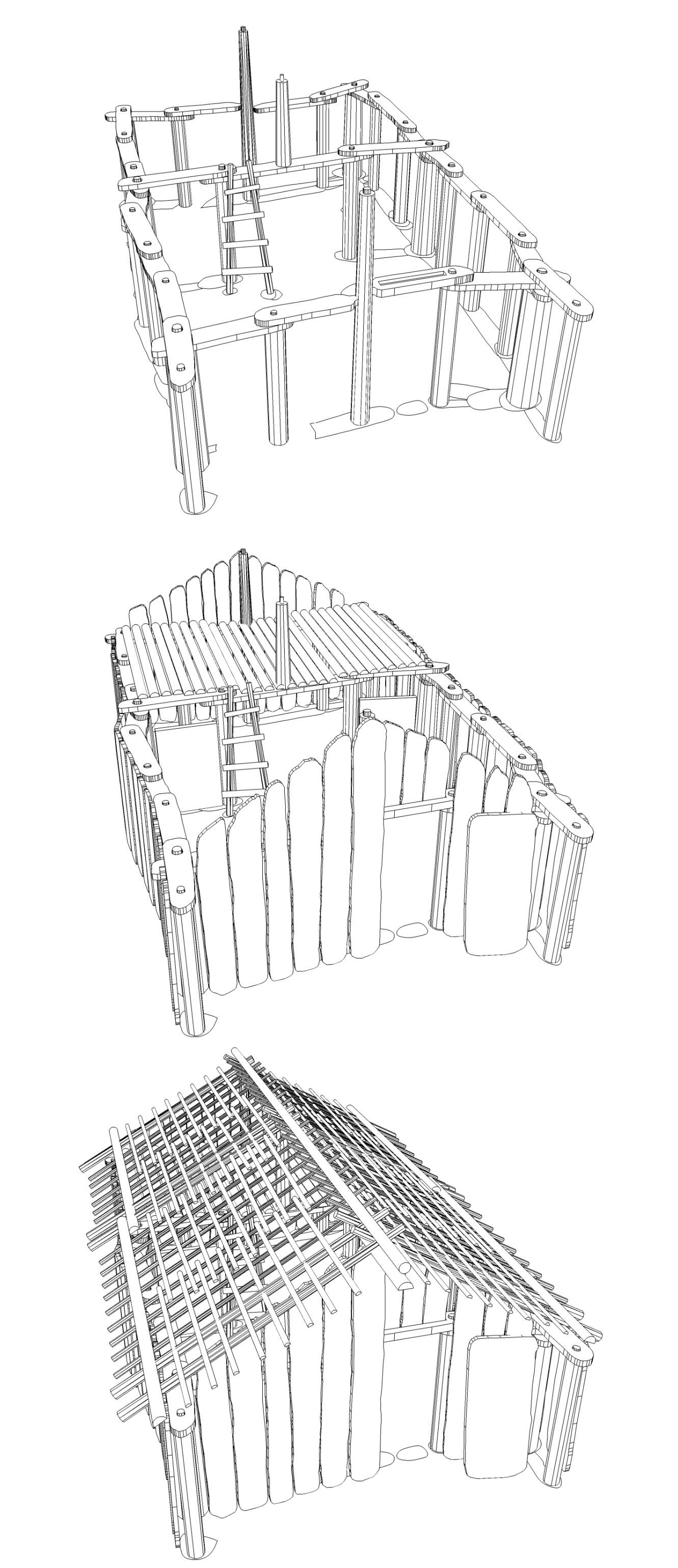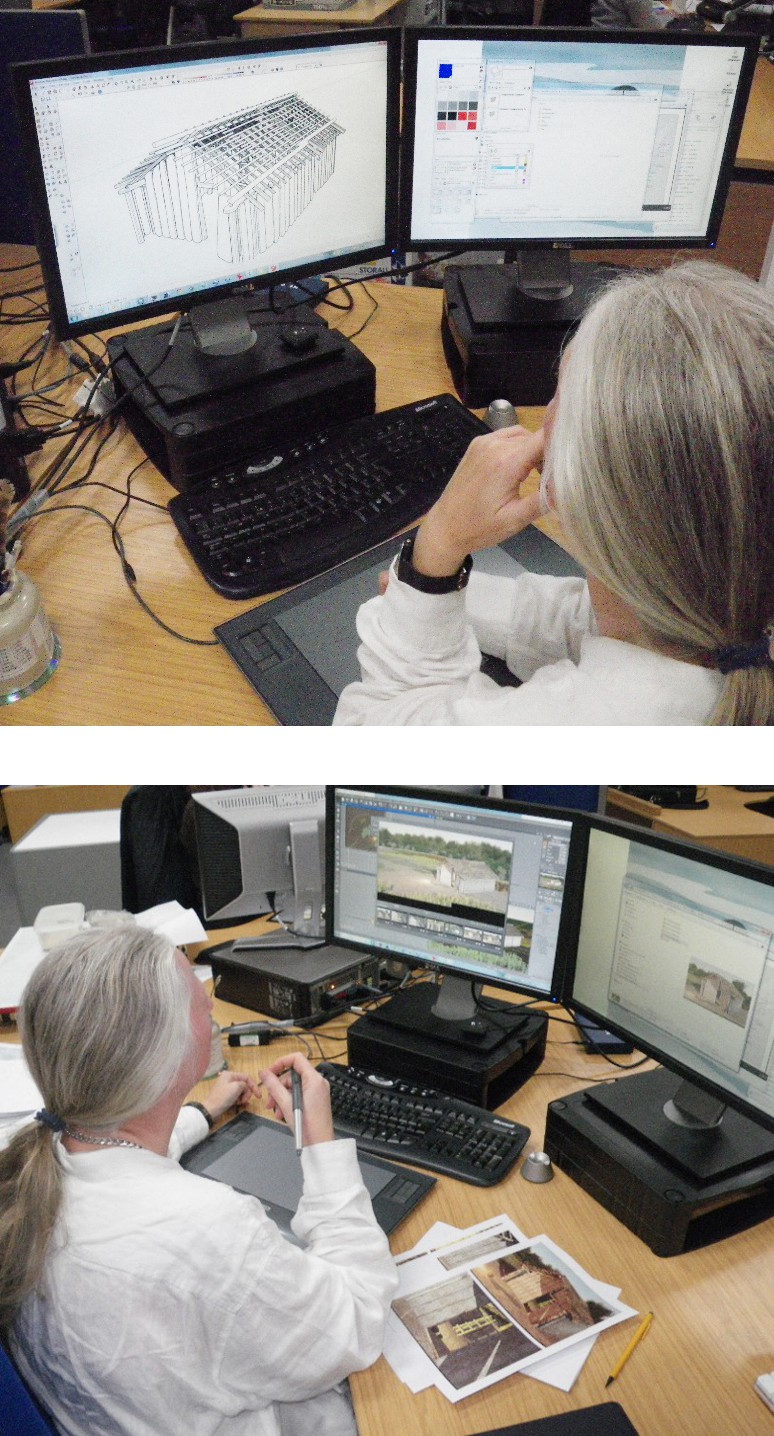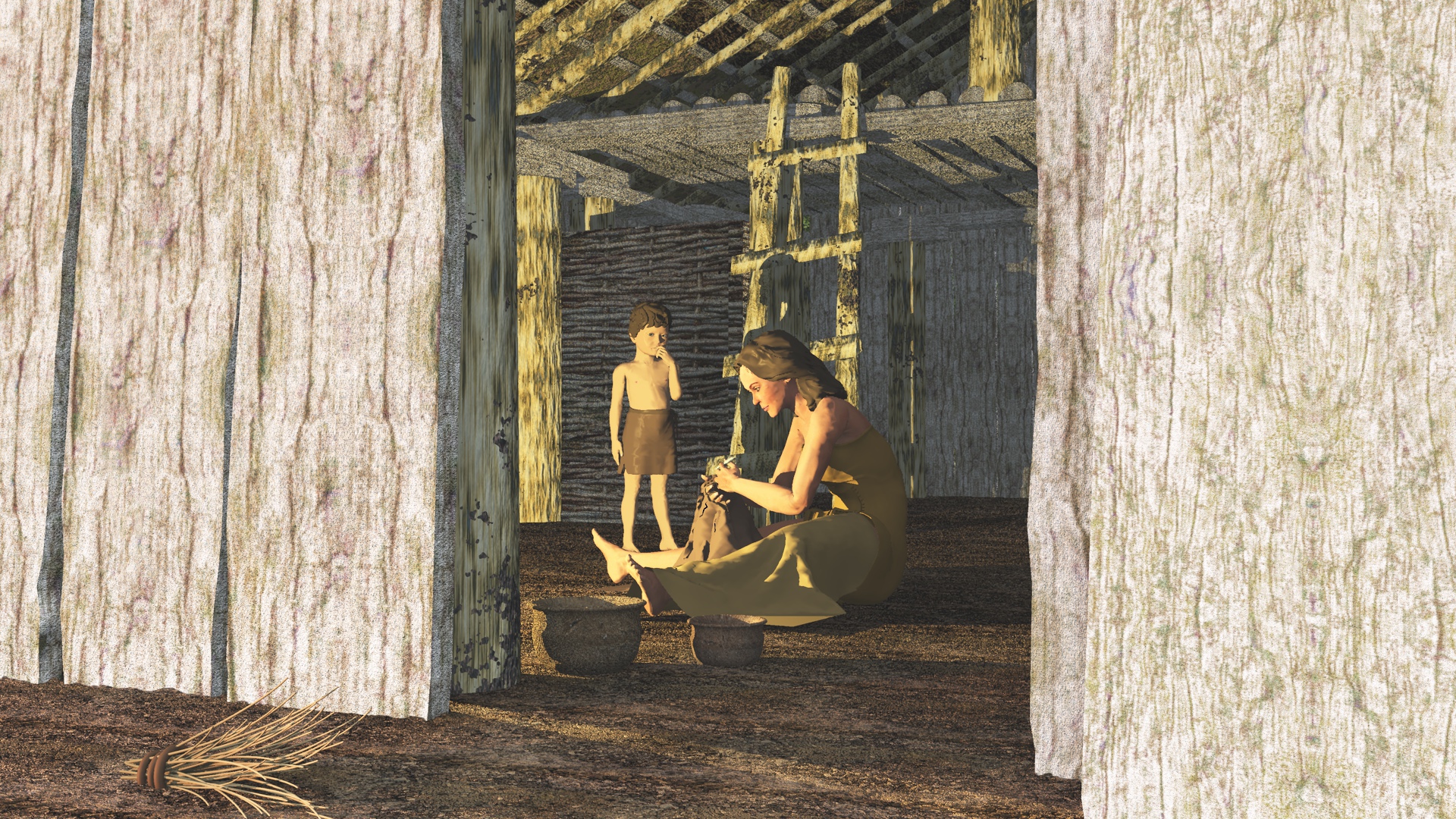
Our interpretation of the house is based on several sources of information. At Horton all that was preserved is the ground plan, the below ground voids left from long decayed timbers. However, our floor plans are very similar to other buildings elsewhere in Southern England, the Midlands and Ireland. In Ireland houses of similar type to the one reconstructed, occasionally caught fire, which can leave the stumps of charred timbers preserved in the ground. We also know about woodworking and woodland management at this time from areas of wetland peat where timber trackways of early Neolithic date (3800-3300 BC) have been preserved. Some of these trackways are quite elaborate and give us a good idea of which wood was selected, how timber was split, worked and shaped and what woodworking joints (eg, mortices) were in use. Tool marks on timbers also give us a signature of what type of cutting blades were used, and we know they had toolkits that included axes, adzes and other flint blades.
Over the last forty years people have also attempted to build various replica prehistoric structures – a good test as to whether a dwelling will work in practice. We have also taken notice of other visual reconstructions, for which there are many.
Armed with this knowledge and guided by what we had found below ground through careful excavation we set about the following visual reconstruction. We based the reconstructed house on the first of the four Neolithic houses discovered at Horton in 2008. The ground plan shows several deeper post-holes where the main upright timbers would have been. The doorway was set to the right on one of the building’s end walls. The end walls are not straight but bow slightly inwards, and one of the long walls has a slight kink at about half way. Towards the back of the building the post-holes and foundation trench is deeper indicating that this building was heavier at the back, so probably that half had a second storey. There is an internal division towards the back of the building which is possibly the central supporting wall. Just in front of this dividing wall are two smaller post-holes which might have held the uprights for a ladder or steps to reach the upper floor. During the Neolithic the farmers would only have had stone, wood and bone tools to build this construction. Mortice joints have been used in the model to attach a wall plate to the top of the main uprights, and a tie beam across the middle dividing the building into two rooms. We believe the foundation trench could have been dug to take the base of plank walls. The walls were probably made of solid oak. We know from experimental archaeology that oak timber can be split using just wooden wedges and hammers, often into very large planks. To see phases of construction watch the Construction Video. We do not know for certain if the roof was pitched or sloping but it was probably thatched or covered in turf.

The model was initially built using AutoCad and SketchUp. During construction various types of plank width and roof styles were tried, until we reached the model we felt best fitted the archaeological record and supporting archaeological evidence from other sites. To see the 3D model watch the Model Video.
Once constructed the 3D model was moved into another package called Vue Infinite. It was here a clearing was constructed based on the archaeological evidence we have gathered for the local environment at that time. These people grew crops such as spelt wheat and lived in woodland clearings. The archaeological record includes pollen from soil samples which give us information about the type of trees and plants growing at the time. Horton was an excellent choice for house building in the Neolithic with good fertile soil for farming, ample supplies of timber in the woodland and a river nearby to provide clean water for the people and their animals. The final scene was used to create some still images, but just because we can, we output another small video clip. To see the finished model in Vue watch the Final Video.
For more about our work at Horton click
